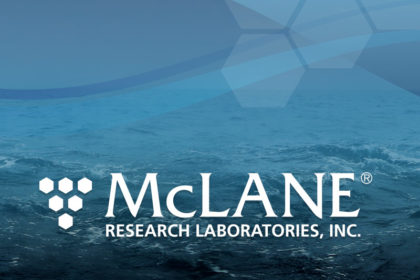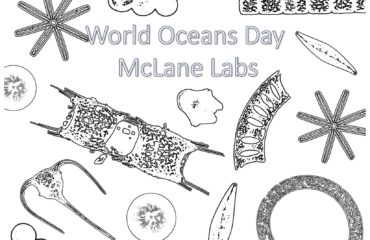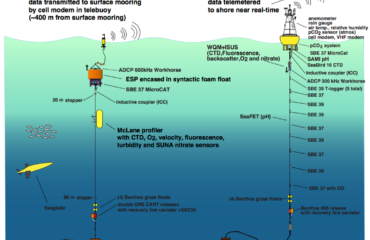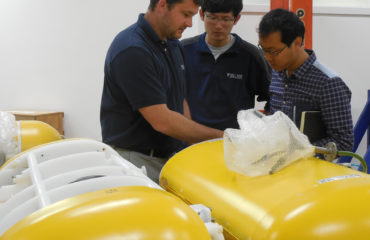
Falmouth, MA – McLane Research Laboratories, Inc. announces the delivery of the first article moored profilers to Woods Hole Oceanographic Institution (WHOI) and Scripps Institution of Oceanography (SIO) for the Ocean Observatories Initiative (OOI) Coastal and Global arrays. In September 2011, McLane was awarded the contract for Coastal and Global wire following profilers (WFP) to be used by OOI. The contract included proposed improvements to the existing moored profiler manufactured by McLane under the WHOI license, production of first article profilers, and options for additional profilers to populate the Coastal Pioneer, Endurance, and Global Arrays.
The OOI, a project funded by the National Science Foundation, is planned as a networked infrastructure of science-driven sensor systems to measure the physical, chemical, geological and biological variables in the ocean and seafloor. As a fully integrated system, OOI will collect and disseminate data on coastal, regional and global scales, and will make ocean observing data available through a unique cyberinfrastructure to anyone with an internet connection.
Moored profilers are one of the primary measurement tools to obtain time series of the vertical profile (i.e., distribution) of important variables in the oceans. In general, moored profilers consist of a suite of sensors that are raised and lowered through the water column on a regular basis. A wire following profiler is a platform which propels itself along the length of the mooring line holding the oceanographic mooring in place.
The neutrally buoyant moored profiler autonomously profiles the water column in a time series along a fixed mooring and is driven by a magnetically coupled drive motor. Profiling depth, time intervals and pressure stops are user-defined, and profiling patterns can span specific seasons or time frames. Integrated sensors include conductivity, temperature, and pressure/depth (CTD), acoustic current meters, chlorophyll a fluorescence, turbidity, photosynthetically active radiation (PAR) and dissolved oxygen. An underwater inductive modem provides real-time communication between the profiler and a surface buoy or seabed node. Over the past decade, more than 150 McLane profilers have been delivered and deployed around the world.
The two types of wire following profiler used in OOI differ in their scientific mission and their area of deployment. The coastal wire following profiler is deployed in coastal regimes with water depths up to 500 meters. The global wire following profiler is deployed in the open ocean far from shore in waters as deep as 5200 meters. The coastal profilers are maintained biannually, while the global profilers are maintained annually and have a different scientific payload than the coastal profilers.
The OOI Program is managed and coordinated by the OOI Project Office at the Consortium for Ocean Leadership in Washington, D.C., which is responsible for construction and initial operations of the OOI network.
McLane Research Laboratories, Inc. was founded in 1983 to provide advanced time-series samplers and engineering design services to the international oceanographic community. Product lines include a range of bio-geochemical/physical oceanography sampling and profiling instruments for use in oceanographic research and environmental monitoring.



